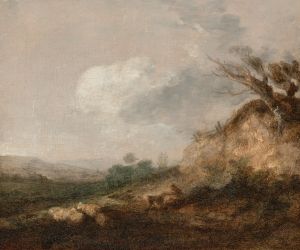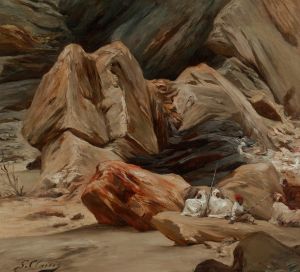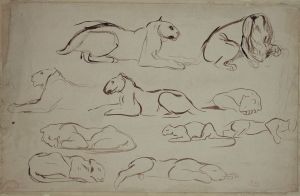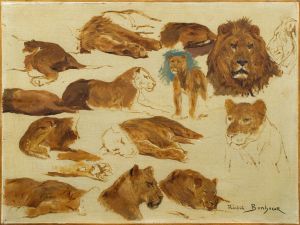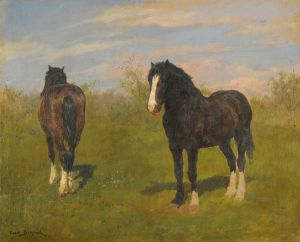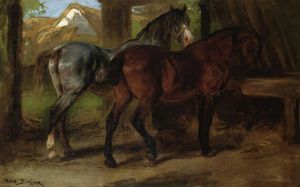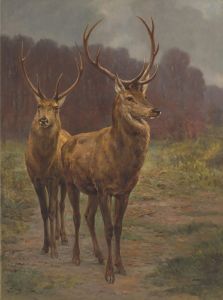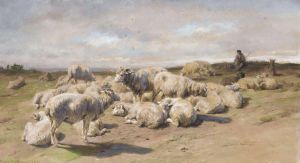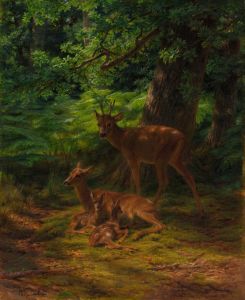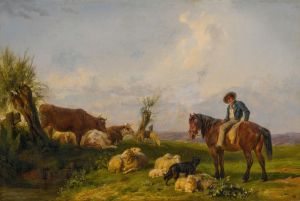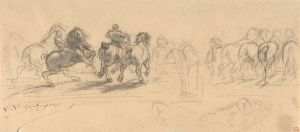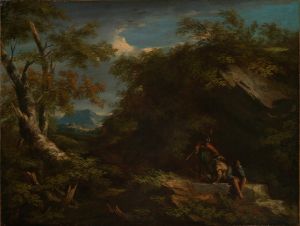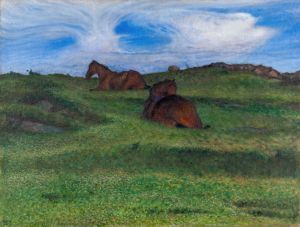
Two Recumbent Tigers
A hand-painted replica of Rosa Bonheur’s masterpiece Two Recumbent Tigers, meticulously crafted by professional artists to capture the true essence of the original. Each piece is created with museum-quality canvas and rare mineral pigments, carefully painted by experienced artists with delicate brushstrokes and rich, layered colors to perfectly recreate the texture of the original artwork. Unlike machine-printed reproductions, this hand-painted version brings the painting to life, infused with the artist’s emotions and skill in every stroke. Whether for personal collection or home decoration, it instantly elevates the artistic atmosphere of any space.
Rosa Bonheur, a renowned French artist of the 19th century, is celebrated for her realistic depictions of animals and her contribution to the genre of animal painting. Among her extensive body of work, "Two Recumbent Tigers" stands out as a testament to her skill and dedication to capturing the essence of wildlife.
Rosa Bonheur was born on March 16, 1822, in Bordeaux, France, into a family of artists. Her father, Oscar-Raymond Bonheur, was a landscape and portrait painter who encouraged her artistic pursuits from a young age. Bonheur's interest in animals was evident early in her career, and she often visited slaughterhouses and livestock markets to study animal anatomy and behavior. This dedication to understanding her subjects is reflected in the lifelike quality of her paintings.
"Two Recumbent Tigers" exemplifies Bonheur's meticulous attention to detail and her ability to convey the majesty and grace of her animal subjects. The painting features two tigers resting, capturing a moment of tranquility and power. Bonheur's use of color and light brings the tigers to life, highlighting their muscular forms and the texture of their fur. The composition is balanced and harmonious, with the tigers positioned in a way that draws the viewer's eye across the canvas.
Bonheur's work was well-received during her lifetime, and she achieved significant recognition and success, a rarity for female artists of her time. Her paintings were exhibited in prestigious venues, and she was awarded numerous honors, including the Legion of Honor in 1865, making her the first female artist to receive this distinction. Her success can be attributed not only to her technical skill but also to her ability to capture the spirit and character of her animal subjects.
"Two Recumbent Tigers" reflects Bonheur's deep respect and admiration for the natural world. Her paintings often conveyed a sense of empathy and understanding, inviting viewers to appreciate the beauty and complexity of the animals she portrayed. This approach resonated with audiences and contributed to her lasting legacy in the art world.
Throughout her career, Bonheur remained committed to her artistic vision, often defying societal norms and expectations. She adopted unconventional practices for women of her time, such as wearing trousers and smoking cigars, which allowed her greater freedom to work in environments typically dominated by men. Her determination and independence were instrumental in her success and have inspired generations of artists.
Rosa Bonheur passed away on May 25, 1899, in Thomery, France, leaving behind a legacy of remarkable animal paintings that continue to be celebrated for their realism and emotional depth. "Two Recumbent Tigers" is a prime example of her ability to capture the essence of her subjects, showcasing her talent and dedication to her craft. Her work remains influential, and she is remembered as one of the foremost animal painters of the 19th century.





